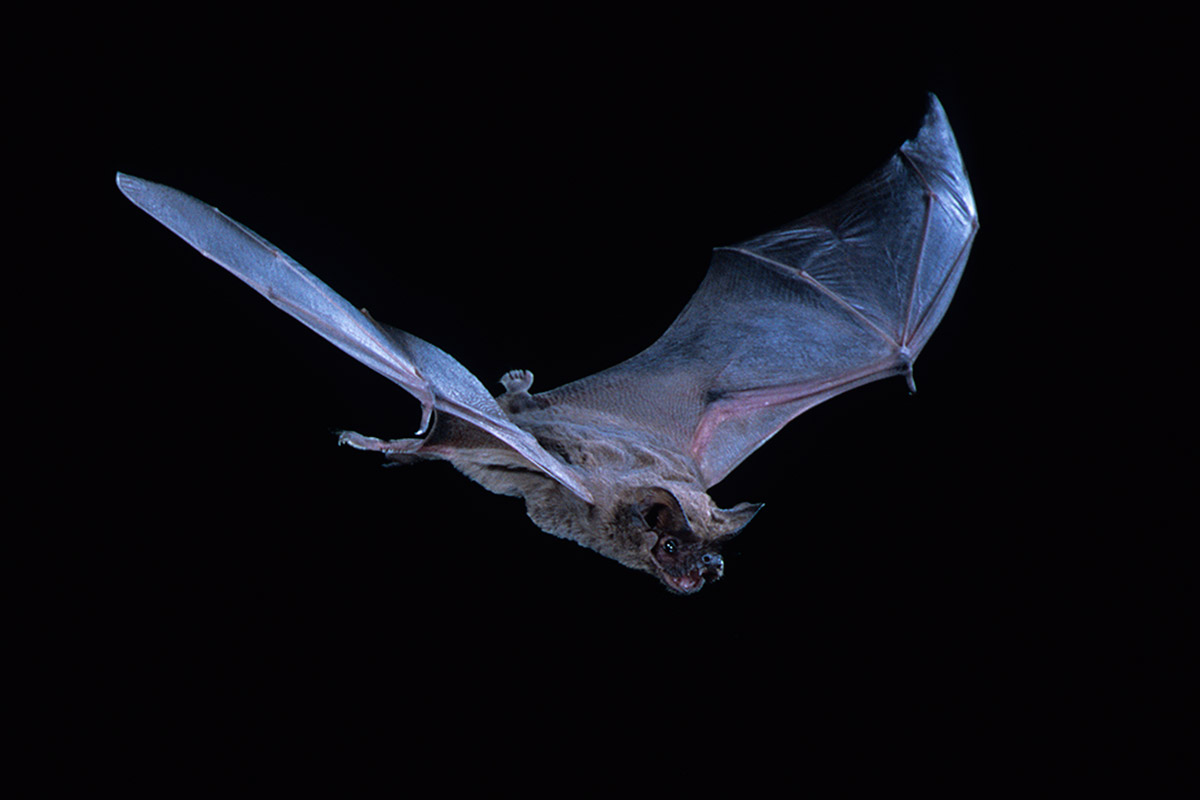
Barry Mansell/Naturepl.com
By Julianna Photopoulos
Brazilian free-tailed bats may have achieved speeds of up to 160 kilometres per hour in level flight, which would make them faster than any bird.
“These are the fastest powered flight speeds documented yet in any vertebrate that is, in bats or birds,” says Gary McCracken of the University of Tennessee in Knoxville. “We didn’t expect these results, even though the Brazilian free-tailed bats are known for their exceptional fast flight.”
Previous studies suggested that birds fly faster than bats, but birds have received much more attention, McCracken says. The fastest bird on record for level flight is the common swift (Apus apus), which reaches around 112 km/h.
McCracken’s team now claims bats have beaten that record. The team used an airplane tracking device on seven bats from the Frio Bat Cave in south-western Texas to track ground distance covered by bats.
They found that all bats achieved speeds of almost 100km/h, with one bat logging a top speed of 160 km/h.
“Most of the time, these animals are moving at moderate speeds, but what we see here is that they exceed these expectations and quite dramatically for brief periods of time,” McCracken says.
But not everyone is convinced. Graham Taylor at the University of Oxford says that errors in estimating bat speed by measuring the distance moved between successive positions could be huge. “So I think it would be premature to knock birds off their pedestal as nature’s fastest fliers just yet,” he says.
Tailwinds or no?
“These bats are indeed flying very fast at times, but this is based on their ground speed,” says Anders Hedenström at the University of Lund in Sweden. “Since they did not measure winds at the place and time where the bats are flying, one can therefore not exclude that the top speeds are not bats flying in a gust.”
McCracken admits the team cannot be certain whether fast fluctuating gusts of wind affected the results, but is confident of the findings.
“It is impossible to know what winds were at the exact time and place, but our data suggests [the bats] achieved these high speeds in what appears to be the absence of wind,” he says. “Our data were collected on nights when winds were totally still.”
Hedenström says the team hasn’t controlled for vertical speed either: an animal in gliding or diving flight can gain higher flight speed than a bird in level muscle-powered flight can. So it’s not clear that bats weren’t helped by gravity, as peregrines are when they dive in their stoop.
But one of the new study’s authors, Sharon Swartz of Brown University in Providence, Rhode Island, says that it is unlikely that the fast flight speeds are due to gravity.
“If the high speeds arose from gravitational effects, we would expect to see them only in the very shortest time segments we’d have a boost in speed from the acceleration due to gravity, but this would not persist.”
Need for speed
Whether the bats were helped by tailwinds or gravity or neither, they certainly flew really fast. But it is unclear why.
“We don’t know the behavioural context of why these bats are doing this, but they must have a good reason as flight is the most expensive form of animal locomotion,” McCracken says.
We do know that Brazilian free-tailed bats travel long distances for seasonal migrations but also for their nightly feedings, moving more than 50 km away from their roosts and more than 1 km above the ground.
They are well adapted to their aerial lifestyle, with long, angular, narrow wings.
“The skin of bat wings is full of muscles that can change the skin’s stiffness, unlike bird or insect wings, which are stiff, much like the planes we build,” says Swartz. “There is still a great deal to be learned about the flight capabilities of these animals, but it is easy to underestimate animals hidden from view by nocturnal habits.”
Journal reference: Royal Society Open Science, DOI: 10.1098/rsos.160398
Read more: Venomous pseudoscorpions use huge pincers to hitchhike on bats
No comments:
Post a Comment